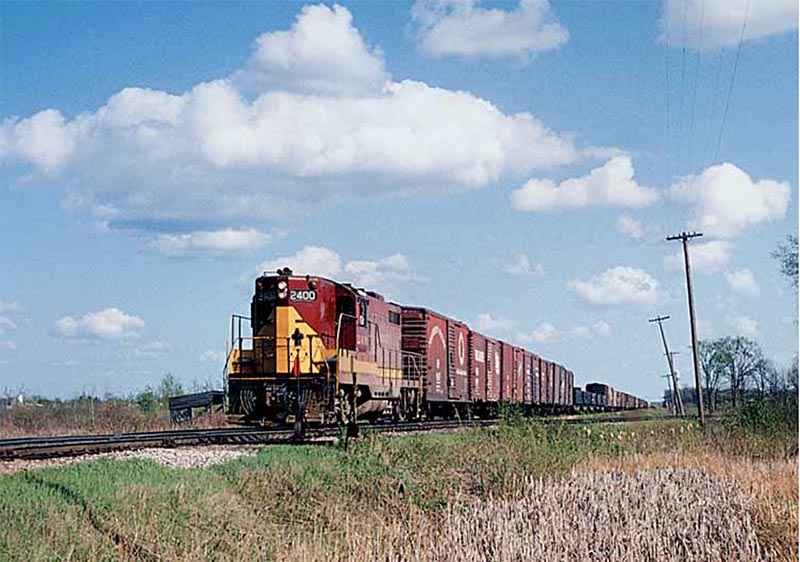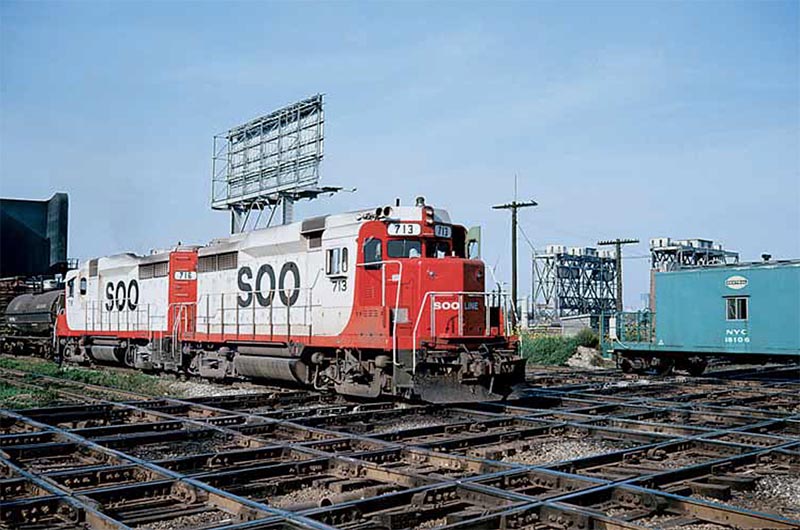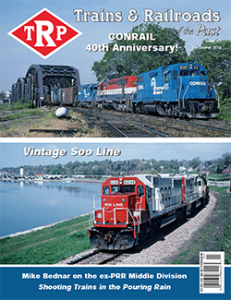Most of the Soo Line’s trackage runs through the rural landscape of the lightly populated upper Midwest. That belies the importance of this rather quiet railroad that never really acquired the celebrity status of other carriers. In addition to helping to feed the world by moving millions of carloads of grain from the northern plains, they also carried much of the iron ore that was used to build our country.
The “modern” Soo Line that most people are familiar with is a result of the January 1, 1961, merger, whereby the Duluth, South Shore & Atlantic Railroad Co. added the Minneapolis, St. Paul & Sault Ste. Marie Railway Co. as well as the original Wisconsin Central to its stable. A long standing nickname became the corporate name: “Soo Line.” All of these roads had been controlled by the Canadian Pacific since the nineteenth century.
At the end of their first year of existence, the Soo Line took stock of their belongings. They were basically a single-track railroad, with 4,691.47 miles of main track and only 90.73 miles of double track,with most of that being in the Chicago and Twin Cities area. They had 231 diesels including 30 passenger units, 65 road freight units, 87 road switchers and 49 switchers. Their rolling stock painted a pretty good picture of their operations, with more ore cars on the roster than boxcars!
Although the DSS&A became the parent company, it was the MSt.P&SSM that provided some of Soo’s key trackage. In 1909 they achieved control of the Wisconsin Central, gaining access to both Milwaukee and Chicago, and on April 1, 1909, they leased the WC for 99 years. In 1913 the railroad purchased 2400 shares in the Belt Railway of Chicago, making them one of 13 joint owners.

Nineteen year-old Soo Line GP9 #556 is sitting patiently while getting serviced at Gladstone, Michigan, in July 1974. Although it’s obvious that the 556 is assigned to local freight duty in a sparsely populated area at this point in its life, the Geep was actually built for passenger service, having been equipped with a steam generator to provide heating for the coaches. The rooftop-mounted air tanks (torpedo tubes) are the best spotting feature for passenger power, as they had to be relocated in order to add the boiler. It’s sobering to realize that a diesel acquired to haul the varnish would one day be relegated to yeoman’s work in Michigan’s Upper Peninsula. Photo by Walter Olevsky.
Big changes were in store for Soo Line in the 1980s and 1990s. On February 5, 1983, the bankrupt Milwaukee Road was acquired by the Soo Line for $658 million. In preparation for the upcoming merger, on the final day of 1984, Soo Line Railroad stock was exchanged one-for one with a new company — the Soo Line Corporation. A year and a day later, the Milwaukee Road was officially merged with the new corporation.
In 1986 Soo Line created the Lake States Transportation Division in an effort to reduce labor costs, but their plan was not approved, so they sold the division to Wisconsin Central Limited on October 11, 1997, which included 26 locomotives, 2,210 freight cars and about 2000 route miles. Meanwhile, Canadian Pacific increased their ownership of the Soo Line from 56% to 100% in 1990.
 The long Wisconsin winter has finally been left behind and spring is in the air as Soo Line EMD GP9 No. 2400 singlehandedly drives westward with a 70-car freight train on May 10, 1964. For those of you who have gotten used to two or three 4400-horsepower widecabs on freights, how do you like this train rolling across the tabletop-landscape behind only 1750 horses? Collection of Kevin EuDaly
The long Wisconsin winter has finally been left behind and spring is in the air as Soo Line EMD GP9 No. 2400 singlehandedly drives westward with a 70-car freight train on May 10, 1964. For those of you who have gotten used to two or three 4400-horsepower widecabs on freights, how do you like this train rolling across the tabletop-landscape behind only 1750 horses? Collection of Kevin EuDaly
Despite all the corporate reshuffling, Soo has remained under Canadian Pacific control for over 125 years. Almost everything carries CP labels now, but there is no doubt that the quasi-independent Soo Line was a great railroad to photograph and will be remembered fondly for its fine scenery, variety of motive power and its bright paint scheme… and, perhaps most of all, its friendly employees who were often happy to accommodate the visiting fan…



